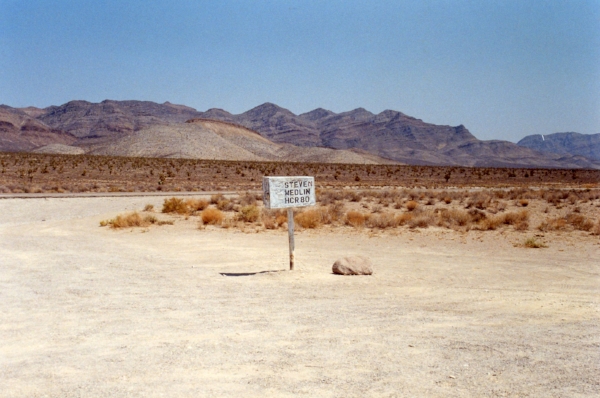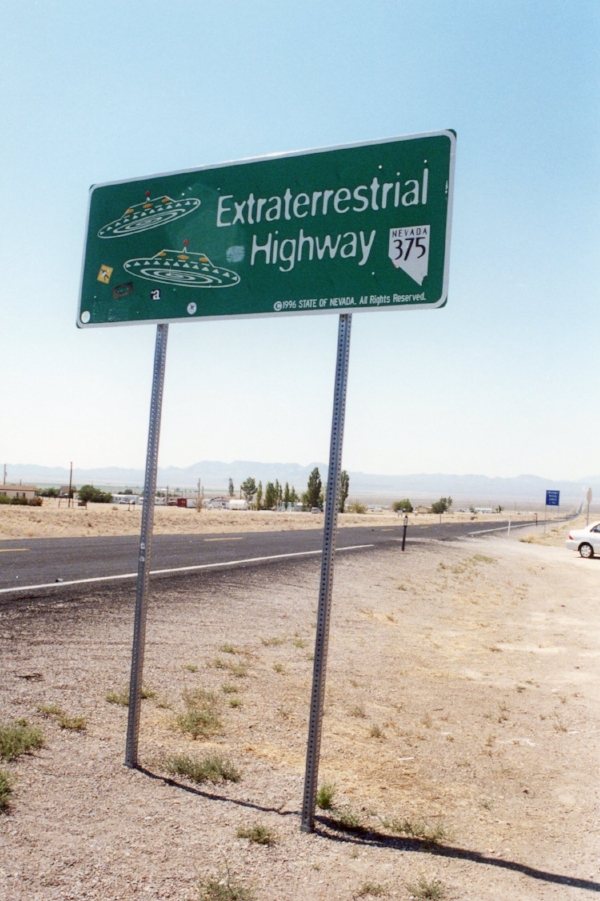‘Nonsense,” said the Talmudic scholar Saul Lieberman, referring to the Kabbalah long before its celebrity moment, “is nonsense, but the history of nonsense is scholarship.” In the intriguing if uneven “Pale Horse Rider,” writer and journalist Mark Jacobson takes a primarily biographical approach to the strange, sad tale of the turn-of-the-millennium conspiracy theorist Milton William “Bill” Cooper (1943-2001). In doing so, he has missed an opportunity to take a deeper look at how, what and why we believe.
Cooper’s best-known work, “Behold a Pale Horse” (1991), is a dense, meandering and bewildering compendium of conspiracy theories. These include the allegation that JFK was murdered by his driver, the discovery of a plan to blow up Jupiter and the revelation of a treaty between Ike and space aliens. Yet there is also the suggestion that “the whole alien scenario is the greatest hoax in history,” a trick to frighten the “sheeple” (a favorite Cooper term) into submission to a “one-world government” controlled by . . . the Illuminati. Choose your own truth. After all, Cooper himself concedes that “one or more conclusions may be wrong.” This Bedlam medley has sold almost 300,000 copies. Why?
Readers wanting to find out are mainly left to navigate their own way through the fever swamps: Mr. Jacobson describes more than he explains, a flaw mitigated by his sharp eye and keen ear. Scattered through his account are stepping-stones to a partial understanding of Cooper’s appeal. A rapper from the Wu-Tang Clan tells Mr. Jacobson that “everybody gets f— [but] William Cooper tells you who’s f— you,” a near-perfect, if NSFW, summary of conspiracism’s attraction to the powerless or paranoid. It offers a structure for rage, an excuse for failure, a flattering fantasy of being in the know.
Mr. Jacobson dubs Cooper a “P.T. Barnum of dread.” (“The Hour of the Time,” his long-running shortwave-radio show, opened with wailing sirens, a sinister distorted voice, barking dogs, shrieking people and the sound of “tramping . . . feet, growing louder, closing in.”) But Cooper was a huckster who took more than a swig of his own Kool-Aid. The origins of his dreamscape—born at the intersection of creativity and psychiatric disorder, and reinforced by post-Vietnam, post-Watergate disillusionment and the need to make a buck—are easier to understand than its evolution. A saga in perpetual flux (Knights Templar! Freemasons! The aliens really were a hoax!), its backstory stretched across millennia.
Cooper was obsessed with the New World Order and the actions of jackbooted government enforcers against the Branch Davidians in Waco, Texas, and white separatist Randy Weaver at Ruby Ridge, Idaho. He became a part of the “patriot” fringe (Timothy McVeigh was an admirer). But, while his views often inspired theirs (the Clinton administration labeled him America’s “most dangerous” radio host), they did not always coincide. Cooper’s following among some African-Americans, a community targeted in conspiracies he claimed to have uncovered, does not fit the militia mold. On the other hand, Cooper reproduced the notorious anti-Semitic forgery “The Protocols of the Elders of Zion” within “Behold a Pale Horse.” The deception, he maintained, was not that the “Protocols” were a fake, but something else: The plotters were not Jews, but Illuminati. Oh.
Conspiracism seeps through many cultures, nations and eras. It isn’t uniquely American, but it can take distinctively American forms. For example, Americans’ traditional distrust of government can mutate from a sign of rude civic health into a pathology. Cooper, as Mr. Jacobson relates it, tapped into a feeling of alienation fueled (often) by mourning for a vanished, if frequently imagined, past—white picket fences and all that—which he turned into a very American narrative about the betrayal of the promise of liberty contained in the Constitution, a sacred text now disdained.
Mr. Jacobson is not entirely unsympathetic to his subject’s point of view, commenting that there’s “no arguing [Cooper’s] basic insight: that something wasn’t right, that there was something you couldn’t quite put your finger on except . . . that you were a little less free than . . . yesterday.” That’s an extremely generous interpretation of Cooper’s “insight.” In any case, it’s no secret that we live in an ever more controlled, ever more controlling society.
Mr. Jacobson accepts that Cooper said “some of the nuttiest things” yet asserts that what counted was “the journey, the relentless search for truths.” But that was not what Cooper sought. He replaced truths he didn’t like with stories that he did. In June 2001 Cooper discussed threats made against the U.S. by Osama bin Laden. There would indeed, predicted Cooper, be a “major attack.” Bin Laden would be blamed, but “don’t you even believe it.” Within hours of the 9/11 attacks, Cooper was telling listeners that the two jets could not have felled the Twin Towers any more than a truck filled with fertilizer could have brought down Oklahoma City’s Alfred P. Murrah building. He was the first Truther.
Mr. Jacobson attributes the spread of the Truther virus to the need for “explanation . . . [and] something that made sense”—as if, according to its brutal logic, the 9/11 massacre did not. Yet those words work well as a general description of conspiracism’s allure: Unwilling to face life’s arbitrariness, we make connections where none exist.
Cooper ended his days “a madman,” writes Mr. Jacobson, “holed up in his [Arizona] hilltop home.” There was a federal warrant out for his arrest (for tax evasion and bank fraud) but after an altercation with a neighbor, local police took action. An attempted arrest in November 2001 ended with a scramble in the dark. Cooper shot first, leaving a cop paralyzed. A deputy returned fire, handing Cooper a death he had forecast on air—gunned down on his doorstep in the middle of the night, a Truther martyr, some argued.
The most in-depth coverage of Cooper’s death, notes Mr. Jacobson, may have come from “a then relatively unknown twenty-seven-year-old shortwave broadcaster from Austin, Texas: Alex Jones.”




